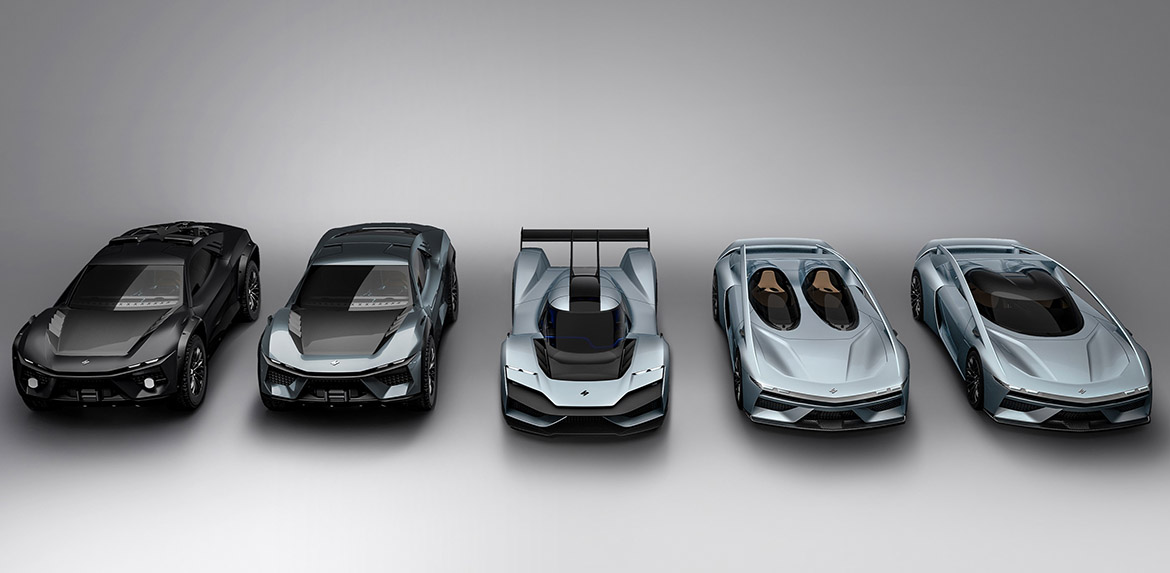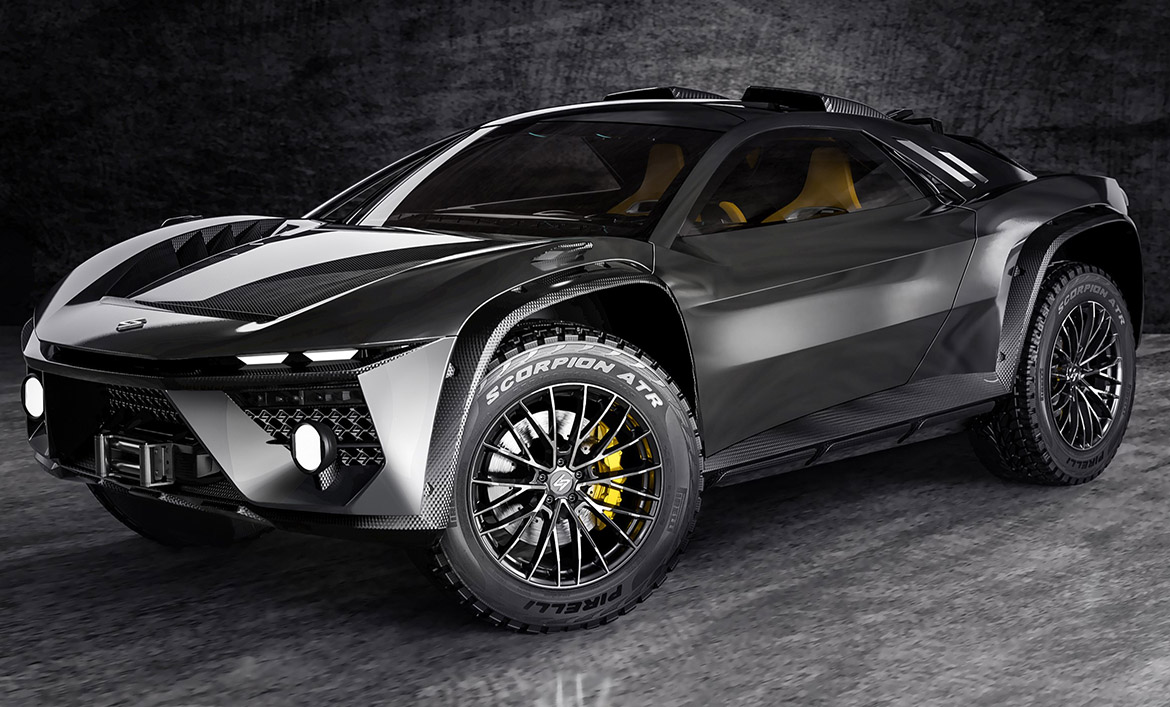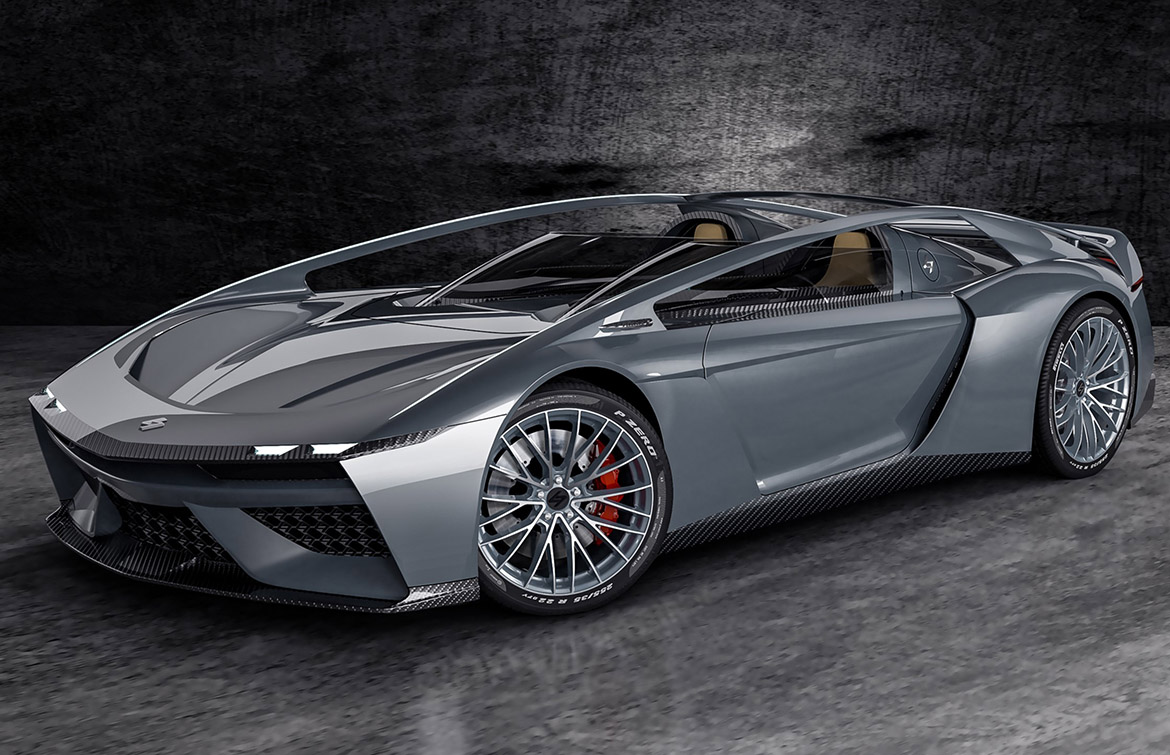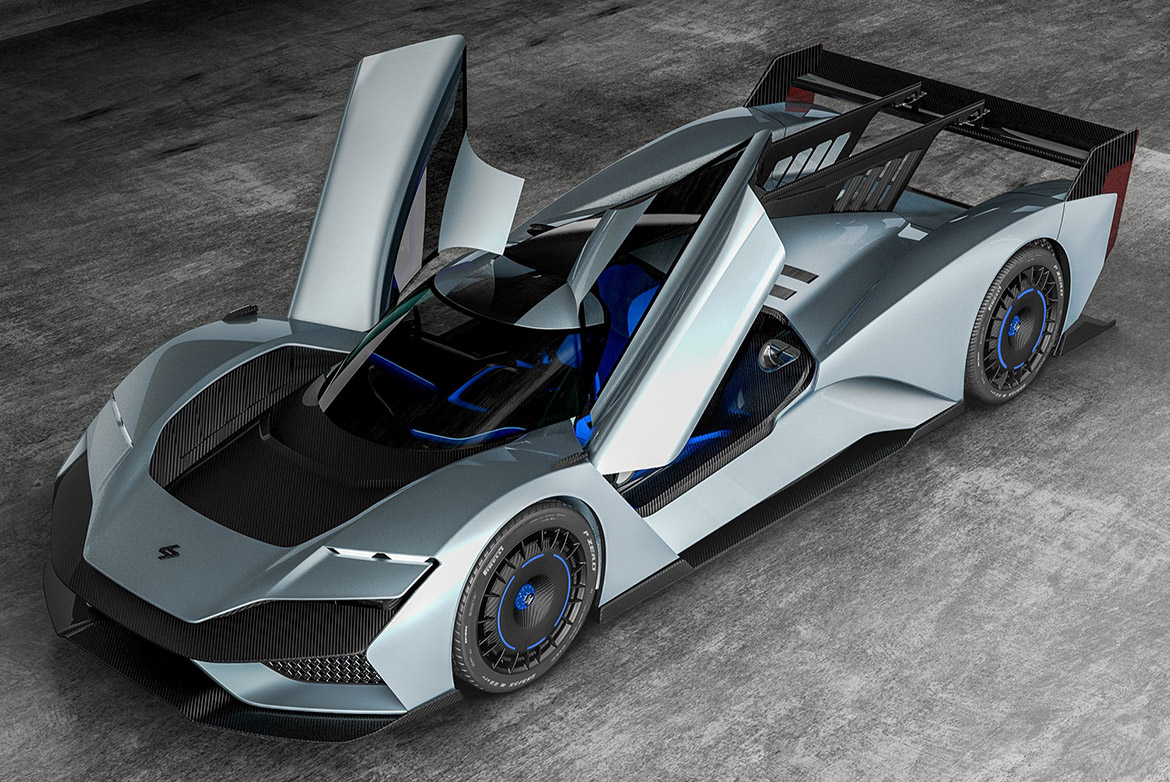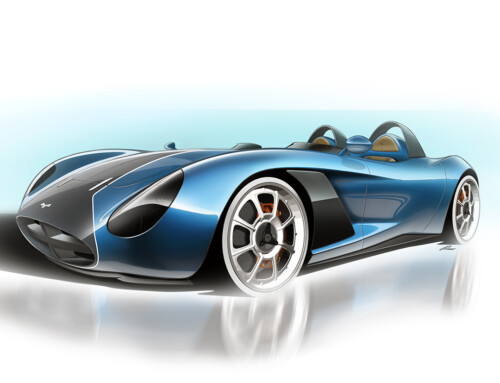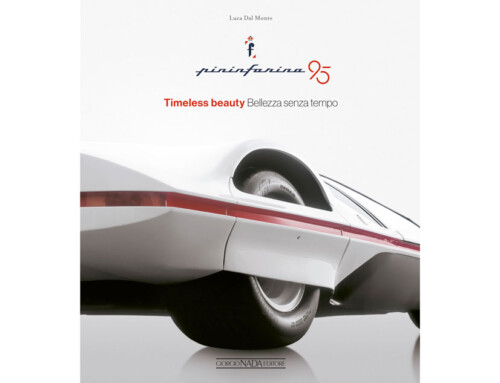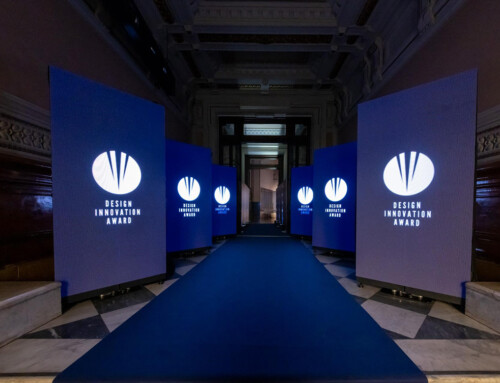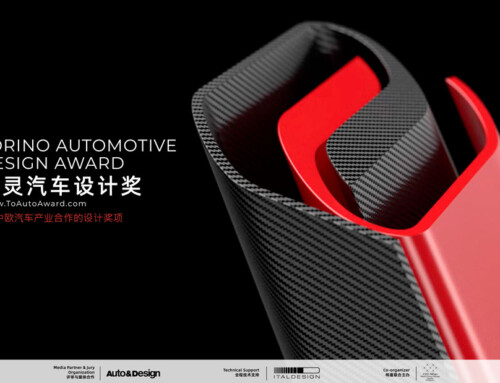GFG Style, the design house of Giorgetto and Fabrizio Giugiaro, presented five new electric hypercar models designed for Laffite Automobili on the occasion of the Formula 1 Grand Prix in Miami. In about six months, GFG Style created a new family feeling for each of the cars created. Under the direction of Fabrizio Giugiaro, GFG Style designed and built the Atrax, an extreme hypersuv (2+1) for off-road use, and a road version, the Atrax Stradale.
Atrax is proposed as a sporty SUV with an exaggerated and extreme shape with important volumes and generous roominess, allowing for a 2+1 seat architecture. “We started from the enormous all-terrain wheels with a diameter of almost one metre that generate important mudguards modelled with applied wheel arches with very refined shapes in exposed carbon fibre. The side is simple with a well-proportioned beltline and a door that rises like a butterfly with a single window that drops regularly. The special feature of the door is the presence of the ‘detached’ A-pillar that acts as an aerodynamic element at the most delicate point of the flow,” explains Giugiaro.
The Barchetta has a double windscreen and separate cockpits and, in the closed variant, becomes a model in its own right: the Barchetta Coupé. The Barchetta has two strong features: two separate seats, two individual windscreens and the Formula 1-derived halo, decidedly unusual for an open, homologated car that gives maximum safety. “The choice of a double dome was inspired by an idea of my father Giorgetto from 1959, later reproposed in the Aztec prototype of 1988,” explains Giugiaro. To access the interior, the two cockpits rise independently but at the same time as the doors, creating a spectacular movement. The front end confirms Laffite styling cues, with the special feature of the clearly delineated twin headlights separated by a large integrated wing. The stylistic element of the design is determined by the arched structure that makes the side line continuous at the top and rests on the large wing-shaped B-pillars.
The Laffite LM1, on the other hand, is a sports car derived from endurance racing but homologated for the road. The mission of the LM1 is to conceive a form on a vehicle that is essentially intended for racing but is homologated for road use, introducing unexpected comfort for all intents and purposes. The lines are drawn by the wind, but thought out in all stylistic aspects to make it even more attractive and uncompromising. The low front is well characterised by the headlights of the Laffite family. The central part of the bonnet is black and houses a large central air outlet, while the painted mudguards feature active fins. The dome/cockpit is very narrow, teardrop-shaped, and with a maximum width of 90 cm as required by regulations for racing cars of this type. The wrap-around windscreen continues in the doors, creating side windows that descend to the B-pillar, which has a similar graphic design to the one on Atrax but here generates two small windows.

